Discover, Learn, immerse, Connect
The Awe-Inspiring Amer Fort
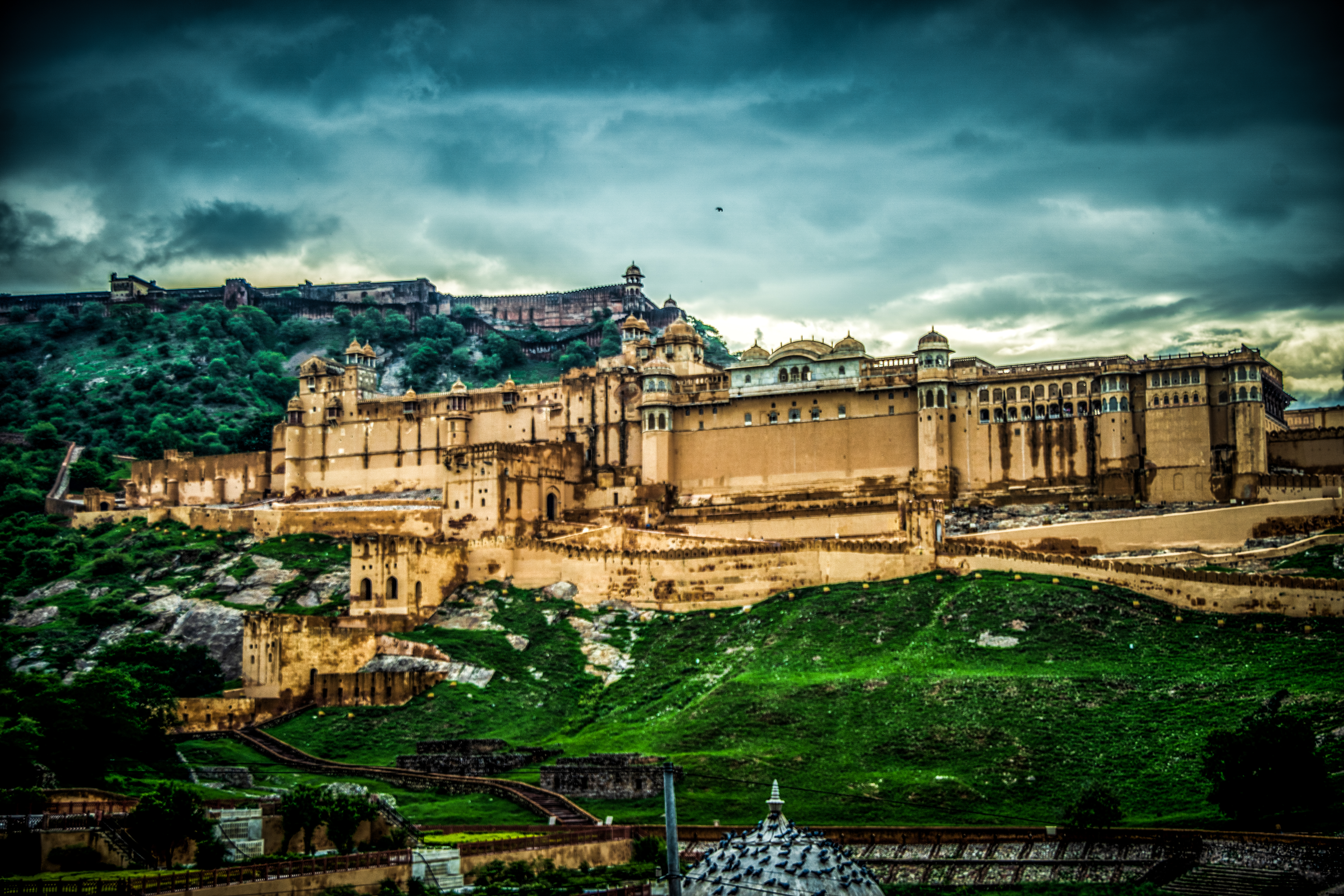
Amer Fort, Jaipur
Picture Courtesy- Wikimedia Commons
India is a multi-faceted country, and her forts and monuments are a source of pride and honor, as they reflect the architecture and lifestyle of a bygone era. The vision behind the fort architecture goes a long way in representing India’s vast, rich, and varied cultural history.
In India, the forts in Rajasthan are known to have the finest architecture amongst all Indian forts. Rajputs, despite their preoccupation with wars, were great patrons of art and architecture. Amongst the numerous forts in Rajasthan, Amer Fort is said to be one of the best. It epitomizes the Giri Parshva Durga style. This style is considered unique because the fortifications and civilian structures extend down the hill slope of the fort and are not just limited to the summit. Additionally, such forts have a harsh exterior and an inviting interior, which is yet another prominent feature of the Giri Durga style.
Amer Fort is located on the hills of the Aravalli Range, which is like a protective shield to the outer structure of the Fort. Located strategically on a forested hilltop (Cheel ka Teel -the hill of the eagles), Amber Fort is also known as Amer ka Qila. It was once the royal seat of the Rajputs. Known for its ornate architecture, it was built by the Kachhwaha rulers. It acted as the governing fort used by the Kachhwahas before they shifted their capital to Jaipur. Among the rulers, Man Singh I, Mirza Raja Jai Singh I, and Sawai Jai Singh II possessed an excellent flair for architecture and this is reflected in the glory of Amer Fort. The architecture of Amer Fort can be summed up as a perfect blend of art and nature. The palace building stands as an excellent example of palace architecture in medieval times. This majestic fort is a conglomeration of several edifices. Started in the 11th century, it took close to 100 years to complete the construction.
Rulers of Amer and patrons of art and architecture, from the left- Jai Singh II, Man Singh I, Jai Singh I
Picture Courtesy- Wikimedia Commons
Rajput forts and palaces have a very complex composition. The architecture of Amer Fort seems to be a beautiful blend of both Indigenous and Mughal styles. The Palace of Man Singh inside the Amer Fort was constructed in the indigenous style, whereas the later additions made by Mirza Raja Jai Singh I and Sawai Jai Singh II exhibit a more Saracenic influence. This is attributed to the growing connection and cultural exchange between the Rajputs and the Mughals. Moreover, the architecture of the palaces and other public buildings show a Mughal influence, while the temples were predominantly influenced by the indigenous North Indian style of architecture. The Fort and the palaces inside it were made entirely of red sandstone and white marble. Precious stones, mirrors, and intricate carvings could be seen all over the palace.
Further, the history of Amer Fort is filled with battles. Amongst all the battles, the ‘Annexation of Amer’ is considered to be the pivotal one. This battle began on the 10th of November 1708, when Bahadur Shah began his march to Amer. He dethroned Maharaja Jai Singh and ruled over Amer with the help of Bijai Singh, brother of Jai Singh. Bijai Singh was made the acting governor of Amer by Bahadur Shah on the 30th of April, 1708 and consequently, the rule of the Rajputanas at Amer was brought to an end.
Amer Fort overlooks an artificially created lake named Maota Lake. This lake also acted as a defensive embankment as one needed to cross it before encountering the vast walls of the fort. The lake mirrors the fort and reflects the beautiful image of the fort in its waters. It contains an island in the center named, Kesar Kyari Bagh. The island has a saffron garden, believed to have been built in the 15th century. Maota Lake was the major source of water for the Royal Family in the Amer Fort. Folklore says that the lake has a hidden lingam, and the state of Amer will come to an end once the stone gets wholly submerged.
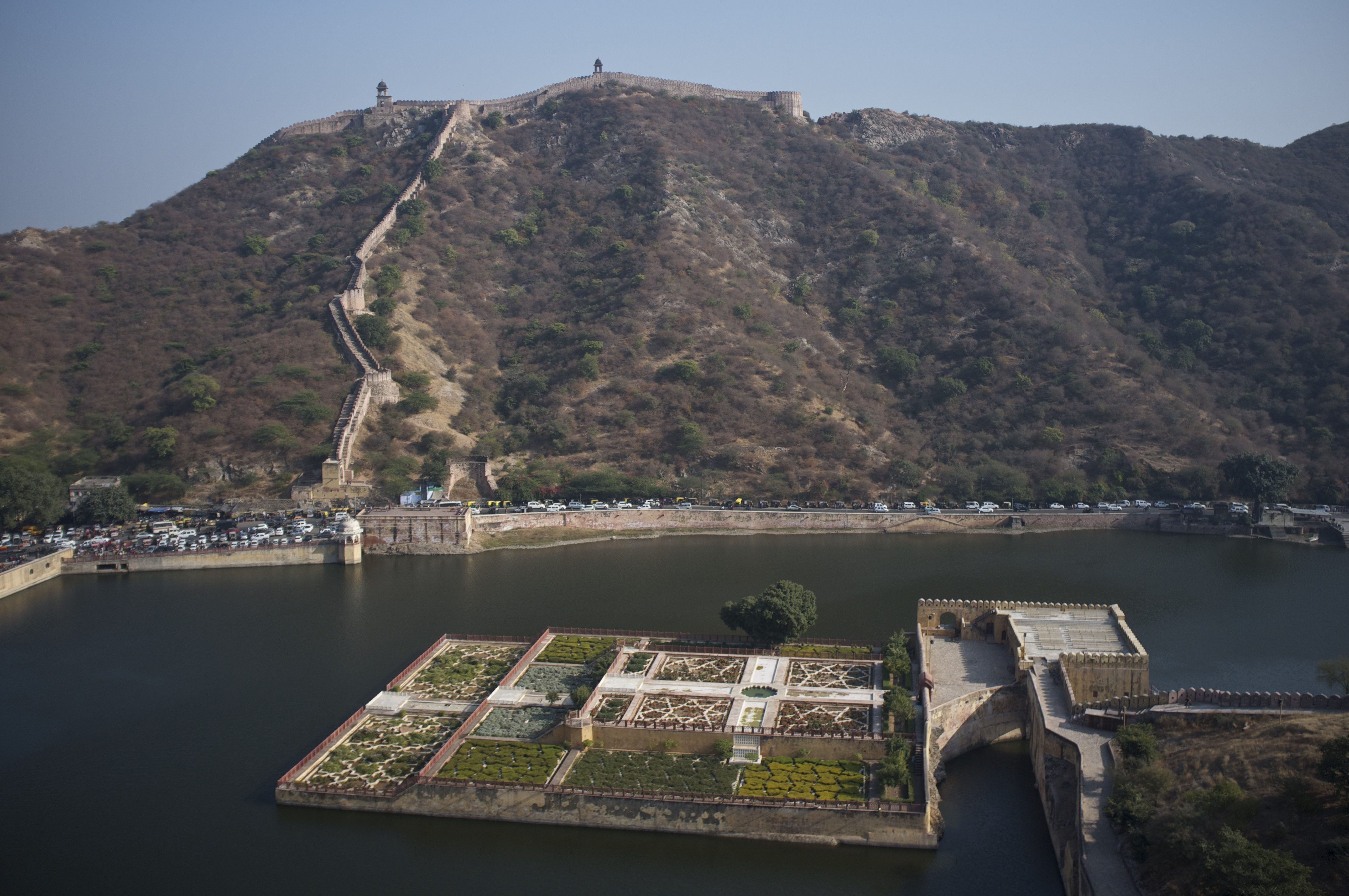
Maota Lake, Amer Fort
Picture Courtesy- Wikimedia Commons
Strengthened with several gates, the fort had two important entrances- one from Dalaram’s garden - Suraj Pol (facing the sun) and the other from the town side - Chand Pol (facing the moon). The lower terrace of the palace was surrounded by a huge courtyard - Jaleb Chowk which was used by the Royal Army for parades and all their military action. The Chowk was further surrounded by blocks of buildings. The other two essential gateways of the fort were Singhpol and Ganeshpol. The royal palaces were accessed through a double gateway called the Singhpol or the Lion Gate. A huge flight of steps leads to the gate, which made the journey to the fort more laborious. This gate opened out into the Diwan-i-Aam. Ganeshpol which is stated to be the most magnificent entrance to the palace lies to the southern side of Diwan-i-Aam. Built by Raja Sawai Jai Singh II, this gateway gave access to the inner court and the principal apartments of the kings (Jai Mandir or the Sheesh Mahal). The top of the gateway was mounted by a pavilion called Sohag Mandir, the windows of which were used by the royal ladies to watch the ceremonial functions held in the Diwan-i-Aam. The western direction from this entrance led to the Bhojan Shala (dining hall). Here the walls were beautifully painted with /system/files/FortsofIndia of the sacred cities of India.
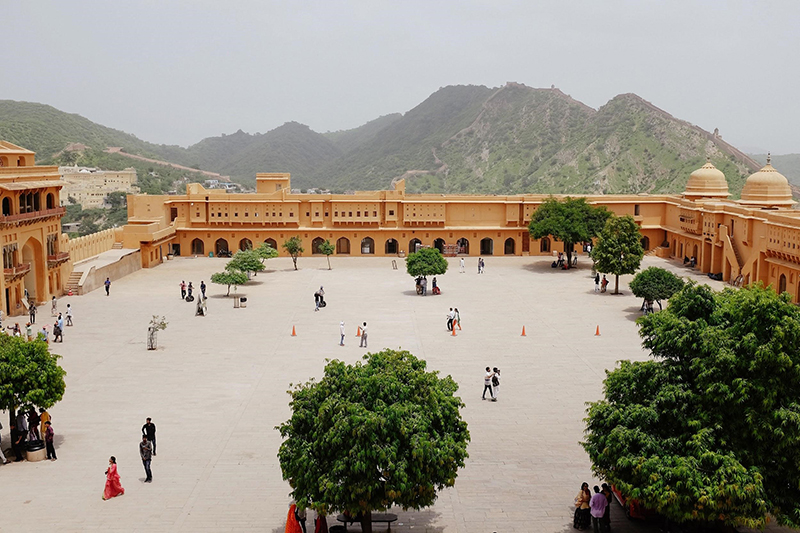
Jaleb Chowk,
Picture Courtesy: Wikimedia Commons
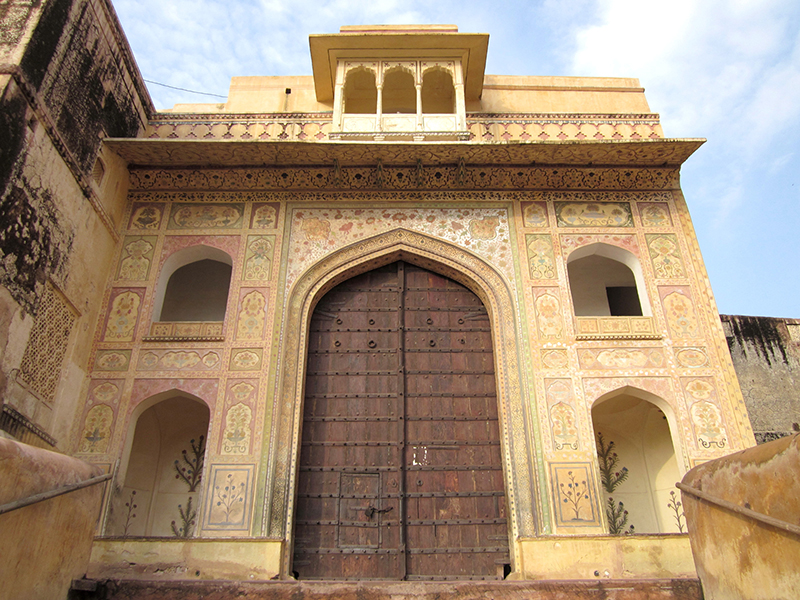
Singhpol
Picture Courtesy- Wikimedia Commons
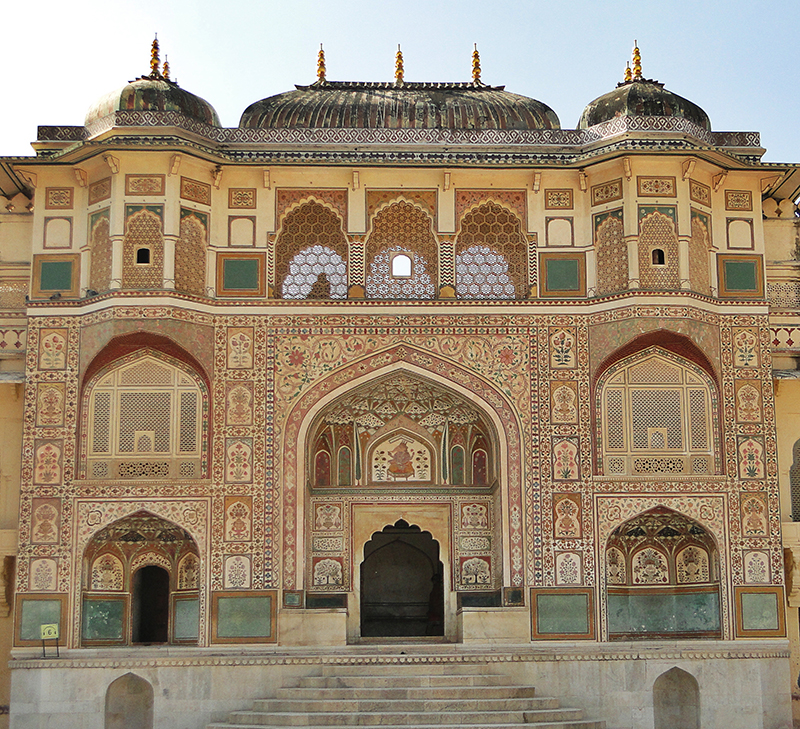
Ganesh pol
Picture Courtesy- Wikimedia Commons
Diwan-i-Aam (the hall of public audience) was the contribution of Mirza Raja Jai Singh and was constructed in the north-east part of the court. This hall was used for public meetings, festive celebrations, and also by the king to listen to the grievances of his subjects. The roof of the Diwan-i-Aam was called Sarad-Punam-ki-Chandini (the light of an autumn full moon) and was enclosed with screens and covered balconies for the protection and purdah of the royal ladies. The construction of the purdah walls is credited to Raja Sawai Jai Singh II. The later construction of Antagarh and Satais Chowka Dalan/ Tosha Khana was done under the patronage of Raja Ram Singh II.
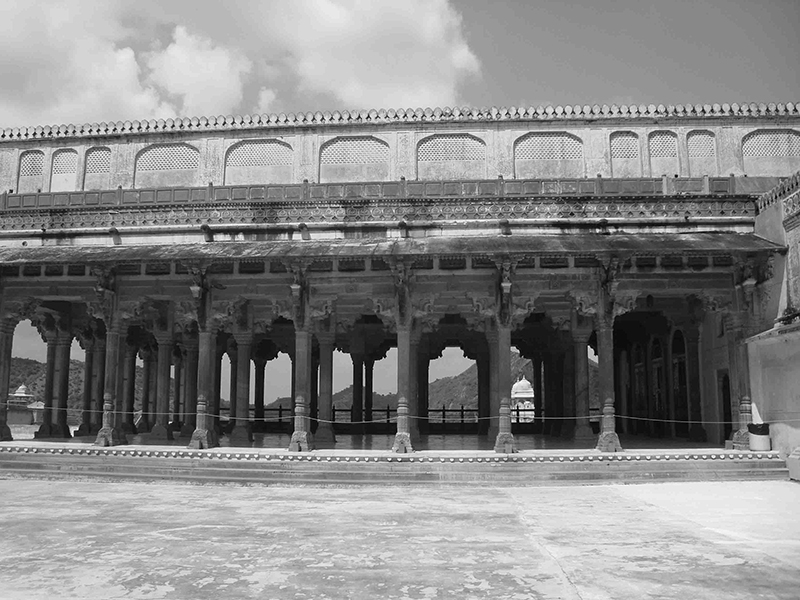
Diwan-I-Aam
Picture Courtesy- Wikimedia Commons
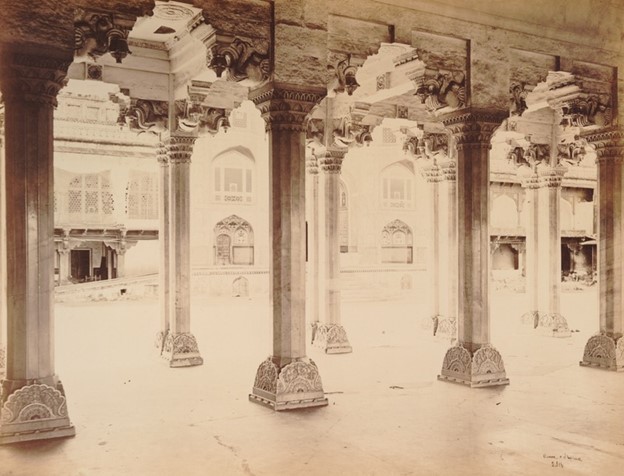
Single Row Marble Pillars in Diwan-i-Aam
Picture Courtesy- Wikimedia Commons
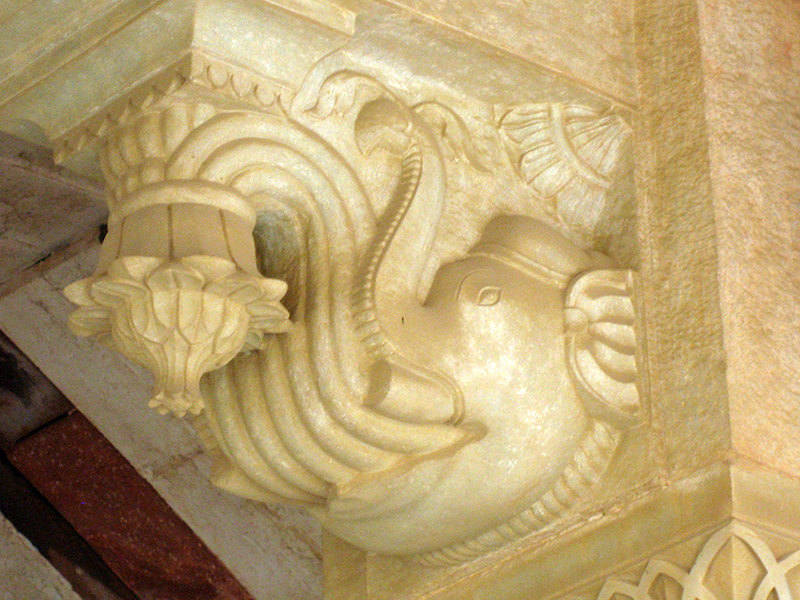
Elephant Shaped Brackets in Diwan-i-Aam
Picture Courtesy- Wikimedia Commons
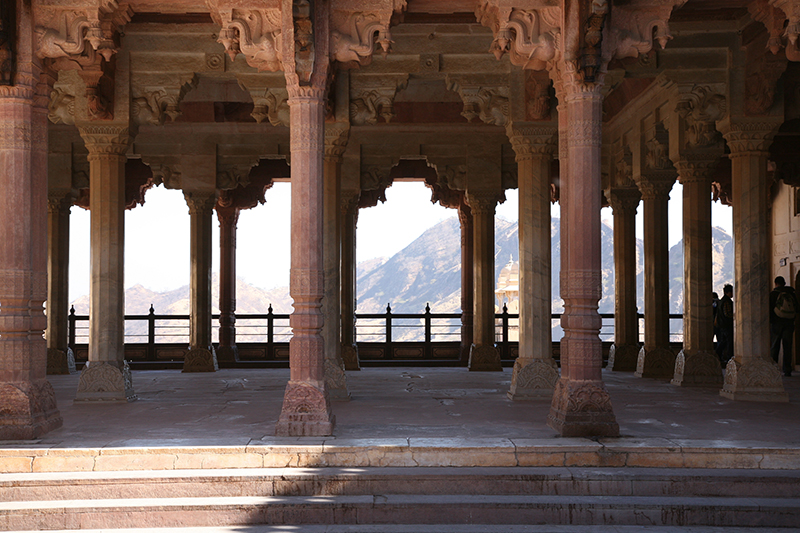
Verandas in Diwan-i-Aam
Picture Courtesy- Wikimedia Commons
Diwan-i-Khas which was the hall of private audiences was exclusively used by the Royal family, close officials, and also by the king to meet his special guests. Located on the eastern side of the inner court, the notable segments of the Diwan-i-Khas were Sheesh Mahal and Jasmandir. The chambers on the roof of Diwan-i-Khas were called Jas/Yasa (Mandir), the interior of which was decorated with fine mosaic, inlaid and gilded work. The palace of Man Singh was accessed through the terrace of Diwan-i-Khas. It is believed that the construction of this palace was completed in 1599 A.D. Built under the supervision of Raja Man Singh, the palace took around 25 years to build.

From the left- Sheesh Mahal, View of the Gardens, Diwan-I-Khas, Picture Courtesy- ASI
Connected to the palace was the biggest edifice built inside the fort, the Zanana Palace. Commissioned by Man Singh, it consisted of a large quadrangle surrounded by a single-story block of buildings, which consisted of living chambers and dalans and was used to house the queens and consorts of the king along with their female attendants.
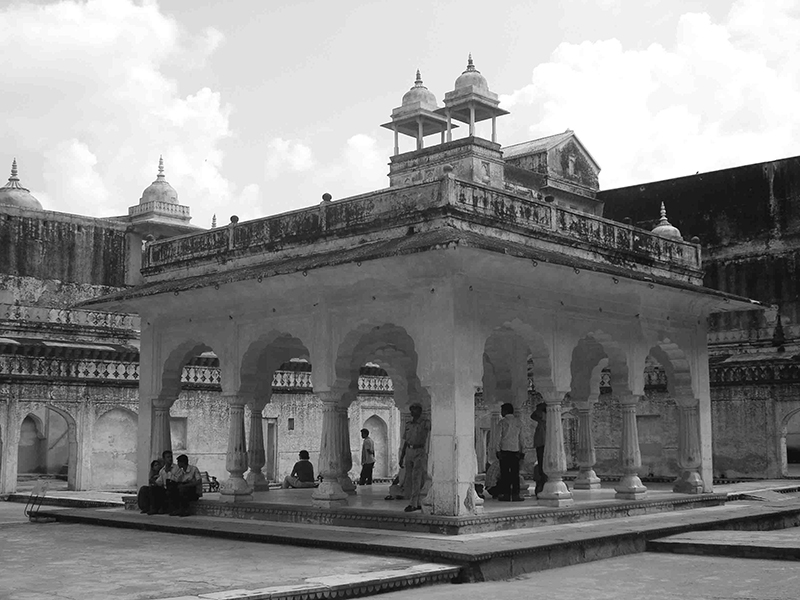
Courtyard in Man Singh’s Zanana Palace
Picture Courtesy- Wikimedia Commons

Secret Tunnel in Amer Fort,
Picture Courtesy- Wikimedia Commons
There was a two-kilometer-long secret tunnel constructed in the Amer Fort that led to the Jaigarh Fort, and it was located behind the Zanana Palace. The walls of Jaigarh Fort were said to have been built stronger and more fortified than that of Amer Fort. The tunnel was built to allow the Royal Family to escape to the Jaigarh Fort if Amer Fort was attacked.
Another interesting connection between the two forts and the tunnel was that the same secret tunnel was used to carry the treasures of the rulers to the hidden chambers which were built below a huge water tank in the Jaigarh Fort. It is believed that this water tank could store 6 million gallons of water. Legends say that after a successful conquest, Maharaja Man Singh was the last ruler to hide his treasure below this water tank.
The fort also houses various significant temples. The most important among them is the Sila Devi’s Temple also known as the Kali Temple or the famous Devi Temple. This temple lies to the right of the Jaleb Chowk and behind the Singhpol gate. It was dedicated to Sila Devi (an incarnation of Goddess Kali or Durga). The entrance of the temple was a double door made of silver and the statue of the main deity enshrined in the temple has got two lions on either side of it. Many stories are surrounding the construction of this temple. It is believed that before leaving for the Battle of Bengal in 1604, Maharaja Man Singh sought the blessings of Goddess Kali to defeat the Raja of Jessore in Bengal. It is said that the goddess appeared to Maharaja Man Singh in a dream and instructed him to retrieve her idol from a sea nearby and install it in a temple. This, they say, is how the temple came into existence. Another narrative about the construction of this temple is that the stone which was used to carve out the main deity of the temple was an offering to Man Singh as a token for his victory in the Battle of Bengal. The deity of the goddess enshrined inside the temple is believed to be the protector of the city of Amer and is honored annually with the sacrifice of a goat or a buffalo.

Sila Devi'sTemple,
Picture Courtesy- Wikimedia Commons
Another significant temple in the fort is that of Jagat Siroman Ji. This is an ancient Vaishnavite temple which is situated at the north-west foot of the fort hill. It was built by Rani Shringarde Kunkavati in memory of her son Kunwar Jagat Singh, who was the eldest son of Man Singh.
Also, the Narsingh Ji’s temple was built by Rani Sishodini, the mother of Mirza Raja Jai Singh I (AD 1645), this temple was dedicated to Lord Narsingh. It is believed to be the first home of the Kachhwaha rulers at Amer.
.png)
Jagat Siroman Ji’s Temple
Picture Courtesy- Wikimedia Commons
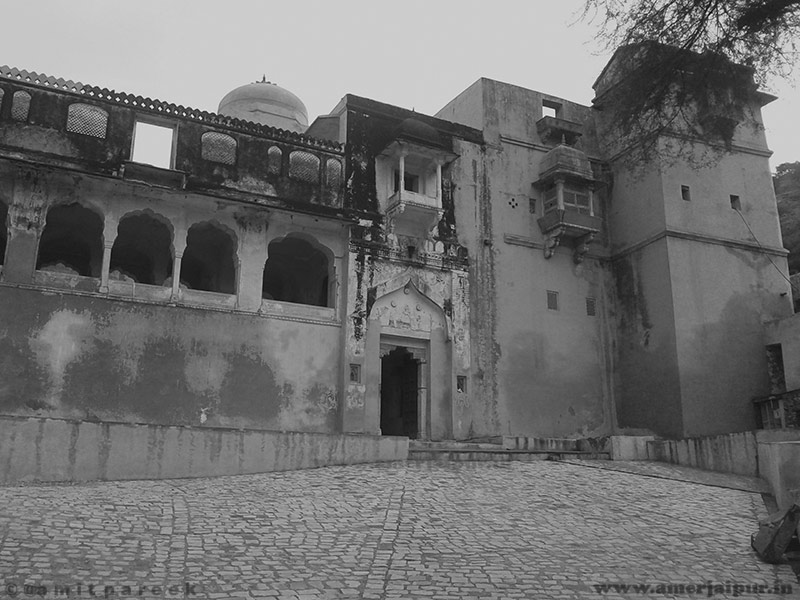
Narsingh Ji’s Temple,
Picture Courtesy- Wikimedia Commons
Amer Fort resonates with the glory and legacy of the Kachhwaha dynasty, which lasted for more than a century. Its spectacular architecture is still admired and remains unmatched even to this day. With the ravages of time, Amer was abandoned by the Rajputana, and Jaipur was made the capital of the Kachhwaha rulers. Nevertheless, Amer Fort still has the honor of being regarded as one of the most beautiful hill forts in India and it is a part of UNESCO World Heritage sites.
That palace which was built lofty in the sky,
On the threshold of which kings laid their eye,
Seated on the battlement of which doves now cry,
‘Where is all that glory, and where all who
Built this has passed by?’
- Umar Khayyam
Jaipur and Amber
B.L. Dhama (ASI)
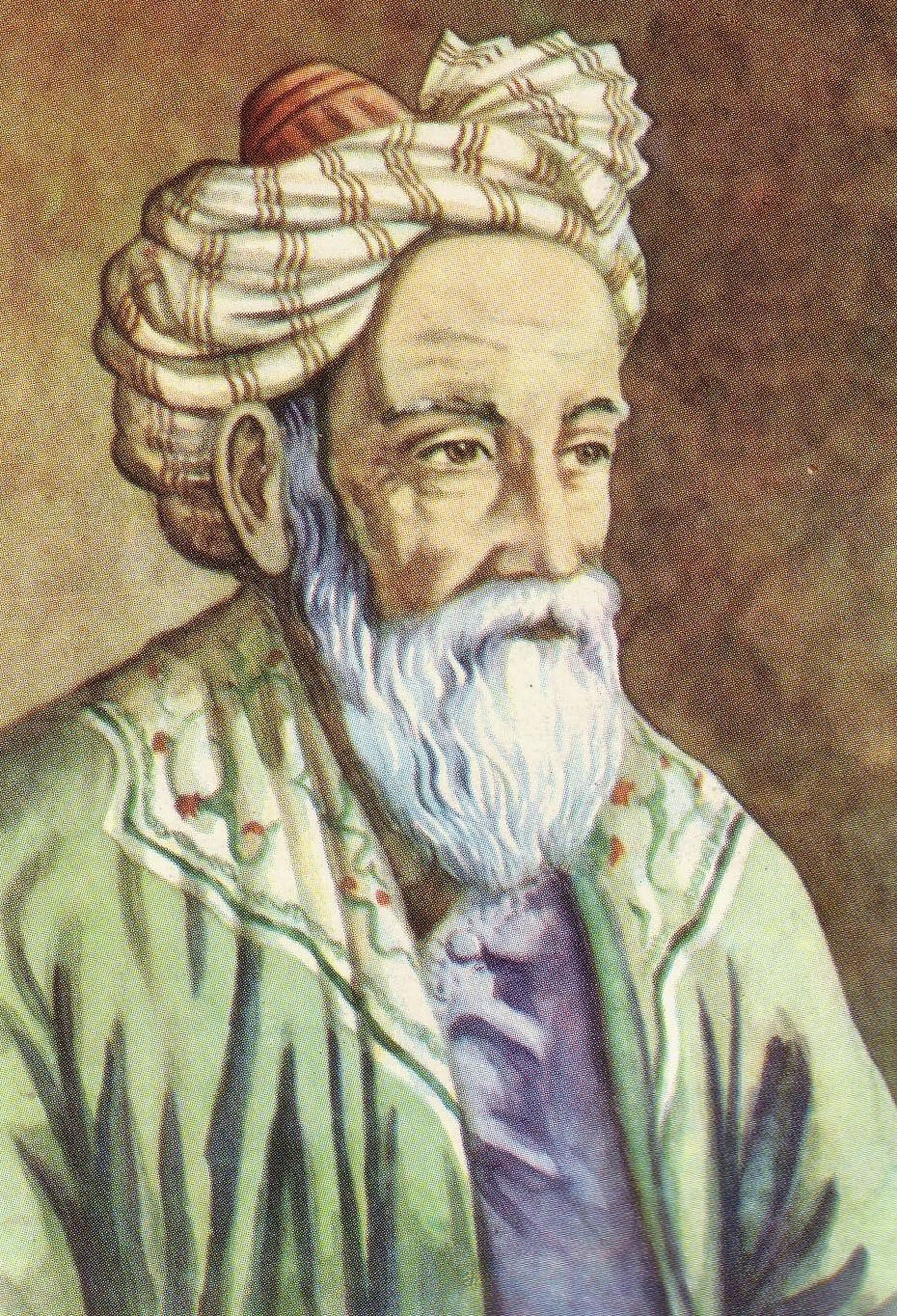
Umar Khayyam
Picture Courtesy- Wikimedia Commons
 Government of India
Government of India


